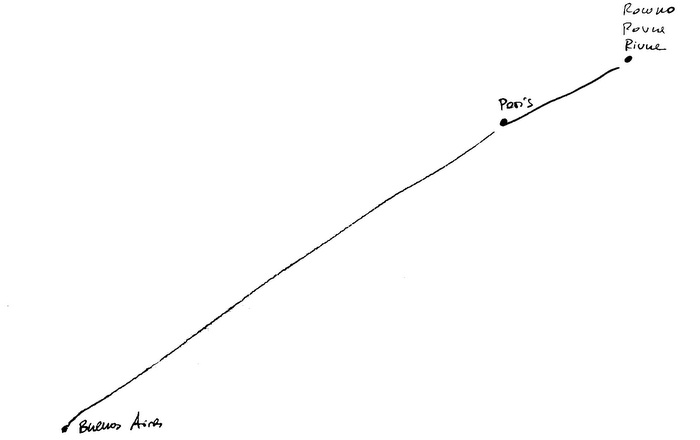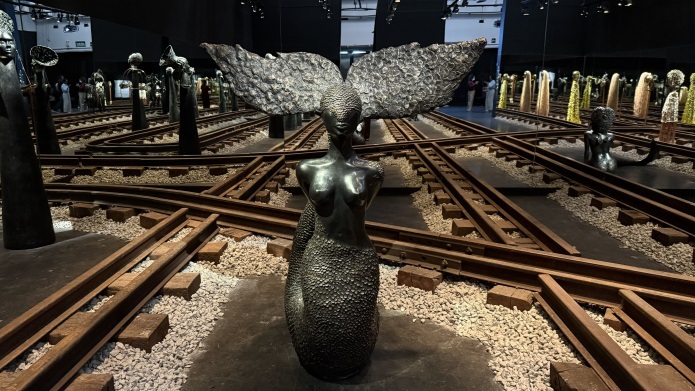Reina Sofia Museum (Madrid) is preparing, among numerous activities to take place in autumn, a new presentation of its collection related to the 1980 and 1990 decades, and nine exhibitions targeting, for instance, social photography, Spanish figurative art or the constructive model of biography on contemporary art.
The schedule also includes the first presentation in Spain of a specific project on performative art, an exhibition in Japan dedicated to the Spanish Informalism and a program of activities that includes audiovisual cycles, seminars, conferences or life art sessions.
Following the display of different sections of its Collection, Minima Resistencia will be exploring the artistic languages from the 1980s and 1990s, between identity and globalization, in Spain and the rest of the world. It’s a first approach to this moment, by opening research lines that will become reality in a definitive presentation to take place in another space of the Museum.
Formas biograficas. Construccion y mitologia individual (November 27, 2013 – March 31) will be examining the constructive model of biography on modern art, beginning with documental or fictitious elements; it is also going to be an analysis on the experimental shapes taken by the biographic subject, especially from the 1950 decade, with the display of autobiography as individual mythology on art.
This show will be putting together nearly 250 works of such authors as Edvard Munch, Paul Klee, Max Ernst, Alberto Giacometti, Andy Warhol, Frank Kafka, Robert Bresson or Spanish Maruja Mallo and Pepe Espaliu, delivering a tour that combines literature, movie, theater and fine arts.
Furthermore, Chris Killip trabajo / work (October 2, 2013 – February 24) is going to narrate, through 107 black-and-white pictures, the social tear faced by the British working class because of the dismantling of the industry between 1968 and 2004.
The program also counts on the presence, first time in Spain, of Slovakian Roman Ondák (September 19, 2013 – February 23, 2014), who will be developing a specific project for the Crystal Palace, in which, just as he always does, he invites viewers to be an active part of the works.
As for Idea: Pintura Fuerza. En el gozne de los años 70 y 80 (November 5, 2013 – May 18, 2014), it’s an essay exhibition that will be gathering a group of paintings created – between 1978 and 1984 – by five Spanish artists whose common characteristic is the return to the figurative art: Alfonso Albacete, Miguel Angel Campano, Ferran Garcia Sevilla, Juan Navarro Baldeweg and Manolo Quejido.
‘Fisuras’ program, aimed at assessing the latest artistic trends, is set to shed light on the work of creators Maria Loboda, Manuel Saiz, Gabriel Acevedo Velarde and Alejandra Riera, who have made a specific product for this event.
On the other hand, and within the framework of the inauguration of Spain-Japan Dual Year, the Museum has organized, along with Accion Cultural Española (AC/E), exhibition Dentro y fuera. Las dos caras del Informalismo español en la Coleccion del Museo Reina Sofia, which can be visited in Tokyo and Nagasaki between October and March 2014 and will include artworks created by Antonio Saura, Antoni Tàpies, Jose Guerrero and Esteban Vicente.
Coinciding with the opening of the Collection’s last section, one of its central artists, Matt Mullican, will make a performance within the context of ‘Intervalos’, a program that shows the new directions of moving image.
‘Historias sin final. Narraciones del otro cine’ cycle, which includes a series of Spanish movies –among them Historia de mi muerte, Albert Serra’s latest work– will be dealing with new ways to narrate fiction within this art.
Thanks to the sponsorship of Fundacion Banco Santander, the Museum is scheduled to host in November the 1st Symposium ‘Horizontes del Arte en España’, a plural space of reflection and debate aimed at facing a critic dialogue of Spanish artistic scene. Furthermore, September sets the starting point for traditional educative programs that target scholars, parents, families, etc.
Just like in previous years, the Museum is going to be the stage, starting in September, of several sessions of Acoustic Space, a music cycle that combines national and international proposals to show different aspects of contemporary musical creation. This year the Museum bets on the music in an eclectic show of proposals that try to underline a map of broad spectrum of trends that make up today’s heterogeneous musical scene. The concerts will be given for free.
Source: Hoy es arte














